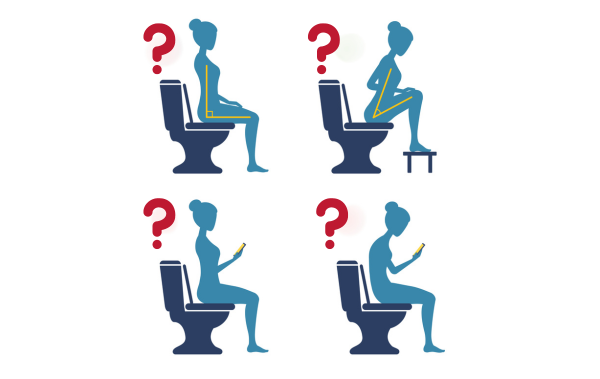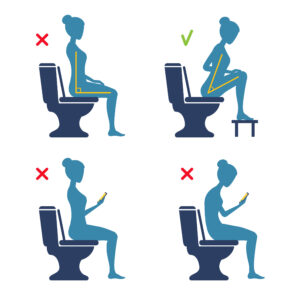Regularity
The #1 Best Toilet Position to Help Go and Relieve Constipation
Struggling with constipation can be a frustrating experience, but did you know that your toilet position might play a critical role in easing the process? The best toilet positions can significantly impact your ability to go and find relief from constipation. By optimizing how you sit on the toilet, you can facilitate smoother bowel movements and make a noticeable difference in your digestive health.

Understanding the Impact of Toilet Position on Constipation
The standard toilet position, where you sit on a regular toilet seat, might not be the most effective for everyone. Traditional sitting positions can sometimes inhibit proper alignment of the rectum and the anus, which can make it more difficult to pass stool. This misalignment can contribute to straining and discomfort during bowel movements.
The ideal toilet position helps to mimic a squatting posture, which aligns the rectum more directly with the anus. This alignment can ease the passage of stool and reduce the need for straining. By adjusting your toilet position, you can improve your bowel movements and potentially relieve constipation more effectively.
The Squatting Position: An Effective Toilet Position
One of the best toilet positions for relieving constipation is the squatting position. Squatting aligns the rectum with the anus, making it easier for the stool to pass through the rectal canal. This position has been used traditionally in many cultures and is often considered more natural for bowel movements.
If you don’t have a squatting toilet available, you can simulate this position using a simple modification. Place a stool or a footrest under your feet while sitting on the toilet. This setup raises your knees above your hips, helping to replicate the squatting posture. This slight adjustment can make a significant difference in how effectively you can relieve constipation.

How to Optimize Your Toilet Position for Better Results
To make the most of your toilet position, consider a few additional tips and adjustments:
- Use a Footstool: Elevating your feet can help achieve a squatting angle even on a standard toilet. Aim for a stool height that raises your knees above your hips, which can enhance the alignment of your rectum and anus.
- Relax and Take Your Time: Regardless of your toilet position, ensure you are relaxed. Straining and rushing can exacerbate constipation and cause discomfort. Give yourself enough time to fully complete the process without pressure.
- Maintain Good Posture: While sitting on the toilet, keep your back straight and avoid leaning forward too much. Proper posture can help facilitate easier bowel movements and reduce unnecessary strain.
Additional Tips to Complement Your Toilet Position
In addition to adjusting your toilet position, several other strategies can help manage and prevent constipation:
- Stay Hydrated: Drinking plenty of water is essential for softening stools and promoting regular bowel movements. Aim to drink at least 8 glasses of water daily.
- Increase Fiber Intake: A diet high in fiber can help prevent constipation. Incorporate fiber-rich foods such as fruits, vegetables, whole grains, and legumes into your meals.
- Engage in Regular Exercise: Physical activity stimulates the digestive system and promotes healthy bowel movements. Aim for at least 30 minutes of moderate exercise most days of the week.
- Establish a Routine: Try to use the toilet at regular times each day, especially after meals. A consistent routine can help regulate your digestive system and improve your bowel habits.
When to Seek Professional Help
While adjusting your toilet position and making lifestyle changes can significantly impact your constipation, there may be times when professional help is needed. If you experience persistent constipation despite trying these adjustments, or if you encounter severe symptoms such as blood in your stool, consult a healthcare provider for further evaluation and treatment.
Overview
The best toilet positions can play a pivotal role in relieving constipation and improving your overall digestive health. By optimizing your posture and incorporating other healthy habits, you can enhance the effectiveness of your bowel movements and reduce the discomfort associated with constipation. Remember to stay hydrated, eat a fiber-rich diet, and maintain regular exercise to support your digestive well-being.
Like? Share with your friends!

